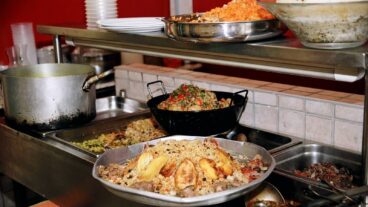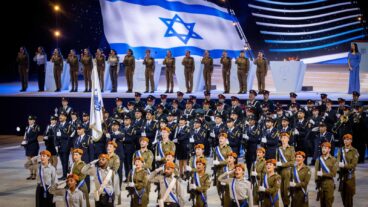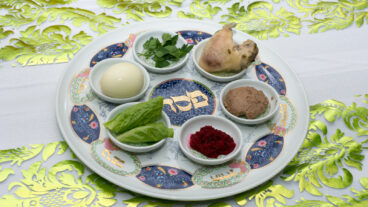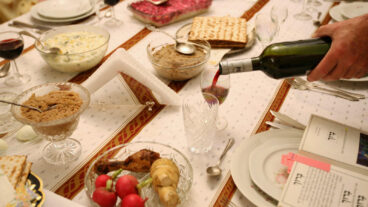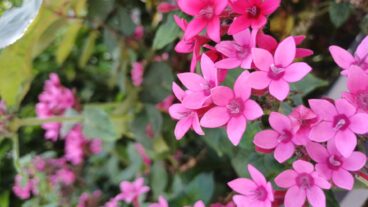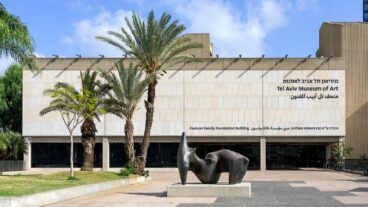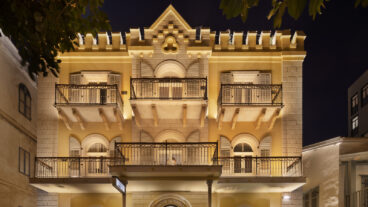‘We’re a city of live and let live,’ said Haifa tour guide Tzivit Sari.A Muslim woman in traditional dress with a white scarf covering her head holds onto a small boy and races to the entrance of Rambam Medical Center in Haifa seeking shelter from the impending rocket attack by Hizbullah from Lebanon.
Soldiers in the Israel Defense Forces in olive green uniforms with rifles slug over their shoulders who had been lounging outside waiting to visit their friends who had been wounded in Lebanon but treated here also moved quickly under the hospital’s concrete awning.
Members of the Rambam trauma team – consisting of both Jews and Arabs – stood by in emergency room that has treated almost 400 people wounded in the conflict.
Against a backdrop of current war which has seen over 100 missiles land in Haifa over the last weeks, the social fabric of Israel’s third largest city with a proud history of coexistence between its Jewish and Arab residents, is alive and well.
“We’re a city of live and let live,” said Haifa tour guide Tzivit Sari, who enjoys showing off how the different Jewish, Christian and Muslim populations mix within the port city of 270,000, 20% of whom are Arab. The fear and tensions that exists in other cities in Israel is absent here, she said.
As proof of her words, Moshe Naman, who is a religious Jew, thought nothing of bringing his daughter Netta, 4, to the safety of an underground shelter the city set up for children of all persuasions in the bowels of parking
garage. Instead of a line of cars, children chased each other across the concrete pavement speaking Arabic and Hebrew. In other parts of the garage they drew pictures or watched television.
“We’re all one here,” said Naman who added that the common threat of violence that has enveloped the entire city has united the two groups.
Police Sgt.Tammie Gourevitch who has been manning the shelter said that the language the children speak is meaningless. Some of the children in the shelter do not even speak Hebrew, she said.
“But so what,” she added. “Children are children here and around the world.”
As a physician in Rambam Hospital, Hany Bahouth who grew up in Haifa, said that people live together without any problem in spite of their differences regarding politics.
“People continue to live here with each and to behave in a correct way,” he said.
When the warning siren goes off his thoughts are for the wounded who are about to come into the hospital and for his family who lives only 10 minutes away.
“It’s been a very stressful situation. In one case one of the rockets fell very close to the hospital here and at the same time you have to be in your position in the emergency room. You need to be very calm to control everything. We need to take care of the wounded patients and at the same time to continue our daily work,” he said.
At times, he said, a siren rang out when he was in the middle of surgery and he had to continue his work as usual.
Nama Yodfat Altschuler has kept her small coffee shop at the top of the Carmel Mountain in Haifa open as usual every day in spite of the missiles.
“I’m in my house and I don’t see leaving my house,” she said, as she sat at one of its small outdoor wooden tables in Cafe Netto.
Among those who sat there as well in the first few days was Fady Najar, an Israeli Arab restaurant owner whose family originated from Lebanon.
After that, he decided that like Altschuler, he would open his doors. But while Altschuler did so naturally as a statement of perseverance, Najar said that he had coexistence in mind.
The entire theme of his small restaurant called Douzan with its indoor and outdoors tables is that this is a point of where east meets west. Even the food they serve is a mix of western and eastern dishes.
On the first day that missiles fell on Haifa on July 13th his brother-in-law was among the injured who were taken to Rambam.
“When there is a war everyone loses,” said Najar who has had only a fraction of his customers.
Among the few that did arrive was a woman celebrating a birthday. “Yes, even during war, people get older,” she said as she and her friends ordered cakes.
Life has to continue, he said. Among the many things that make him sad these days is the idea that the violence has marred the image of the city he grew up in.
“I wanted it to be on the map as a site of peace,” said Najar.
Behind him as he spoke, the lights from the Baha’i Gardens twinkled in the night. The multi-terraced gardens that wind their way up the hill top around a golden dome Temple is the second holiest site for the Baha’i religion founded in the 19th century has its roots in Islam even thought the two are now separate religions. Most of its five million members live in India, Iran and the US, even though some of its founding members lived here in the last century.
The Haifa shrine built in 1953, houses the tomb of one of the religion’s founders Siyyad Ali Mhammed, otherwise known as the Bab. He was executed in 1850 and his remains were brought to Haifa in 1909.
Its deputy secretary general Murray Smith of New Zealand who has lived in Haifa for the last 12 years said that on an average month some 40,000 to 60,000 people visit the gardens. But in light of the attacks the site is closed. Still in an effort to boost morale in the city, Smith said he has left the lights on at night beyond the normal number of hours.
“It’s a nice symbol for world peace,” said Smith who added that such feeling is one of the central tenents of the Baha’i faith. He noted that the slope of the mountain faces Lebanon, “so that makes it a particularly significant symbol of hope for everyone around us.”




